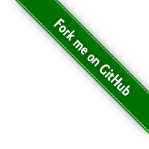#799 Make: More Electronics
Book notes: Make: More Electronics: Journey Deep Into the World of Logic Chips, Amplifiers, Sensors, and Randomicity by Charles Platt. First published October 22, 2013.
Notes
The blurb:
Want to learn even more about electronics in a fun, hands-on way? If you finished the projects in Make: Electronics, or if you’re already familiar with the material in that book, you’re ready for Make: More Electronics. Right away, you’ll start working on real projects, and you’ll explore all the key components and essential principles through the book’s collection of experiments. You’ll build the circuits first, then learn the theory behind them!
This book picks up where Make: Electronics left off: you’ll work with components like comparators, light sensors, higher-level logic chips, multiplexers, shift registers, encoders, decoders, and magnetic sensors. You’ll also learn about topics like audio amplification, randomicity, as well as positive and negative feedback. With step-by-step instructions, and hundreds of color photographs and illustrations, this book will help you use – and understand – intermediate to advanced electronics concepts and techniques.
See also:
Contents
- Experiment 1: Sticky Resistance
- using Elmer’s glue (~ 10kΩ/inch) as a variable resistor to adjust transistor for LED control(!)
- Experiment 2: Getting Some Numbers
- measuring current and voltage
- Experiment 3: From Light to Sound
- PT334-6C phototransistor-controlled 555 astable
- Experiment 4: Measuring Light
- measuring voltage across PT334-6C phototransistor
- Experiment 5: That Whooping Sound
- using a PT334-6C phototransistor-controlled 555 astable to adjust the control voltage of another 555 astable
- Experiment 6: Easy On, Easy Off
- using a PT334-6C phototransistor to switch output of an LM339 comparator
- Experiment 7: It’s Chronophotonic!
- use an alarm clock to switch a relay to switch a light on/off.
- Experiment 8: Adventures in Audio
- using an electret mic
- Experiment 9: From Millivolts to Volts
- verifying LM741 op-amp performance with an electret microphone.
- Experiment 10: From Sound to Light
- noise-activated LED
- Experiment 11: The Need for Negativity
- using negative feedback with op-amp
- Experiment 12: A Functional Amplifier
- A complete audio amplifier with microphone and loudspeaker. The LM741 forms the preamplifier stage, while the LM386 is the power amplifier.
- Experiment 13: No Loud Speaking!
- Widlar’s “The Hassler”
- Experiment 14: A Successful Protest
- a better version
- Experiment 15: It’s All So Logical!
- basic ESP test (2 buttons for 2 players)
- Experiment 16: Enhanced ESP
- enhanced ESP test with cheat detection
- Experiment 17: Let’s Rock!
- rock paper scissor game with digital logic
- Experiment 18: Time to Switch
- rock paper scissor game with switches
- Experiment 19: Decoding Telepathy
- ESP test using 74HC4514 bcd decoder
- Experiment 20: Decoding Rock, Paper, Scissors
- rock paper scissor game with decoder
- Experiment 21: The Hot Slot
- coin slot machine using 4067 analog multiplexer
- Experiment 22: Logically Audible
- simple theremin
- Experiment 23: A Puzzling Project
- tic tac toe
- Experiment 24: Adding It Up
- 3 bit adder with digital logic
- Experiment 25: Enhancing Your Adder
- decimal adder
- Experiment 26: Running Rings
- 555/4017 ring counter game
- Experiment 27: Shifting Bits
- 74HC164 shift register with 555 pulse
- Experiment 28: The Ching Thing
- hexagram display with an LTL-2450Y light bar (or similar)
- Experiment 29: Common Sensors
- using reed switches
- Experiment 30: Hidden Detectors
- hall effect sensor
- Experiment 31: Electronic Optics
- PIR sensor
- enhancing the hot slot game with u-shaped IR sensors
- Experiment 32: Enhancing Ovid
- using magnetic tokens and reed switches for tic tac toe game
- Experiment 33: Reading Rotation
- using rotary encoder
- Experiment 34: Ambient Sensing
- using a thermistor
- humidity sensor
- accelerometers
- touch sensor
- Experiment 35: The LFSR
- using a linear feedback shift register to generate random numbers
- Experiment 36: The One-Person Paranormal Paradigm
- There will be a single LED behind a screen. An electronic circuit will switch the LED on or off, and will then prompt the player to guess which state it is in.
- Is That All?
- A Bibliography
- B Shopping for Parts

